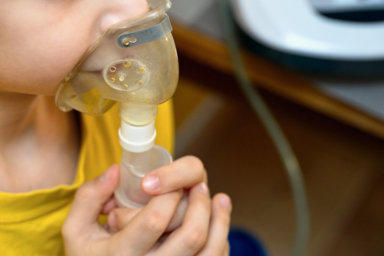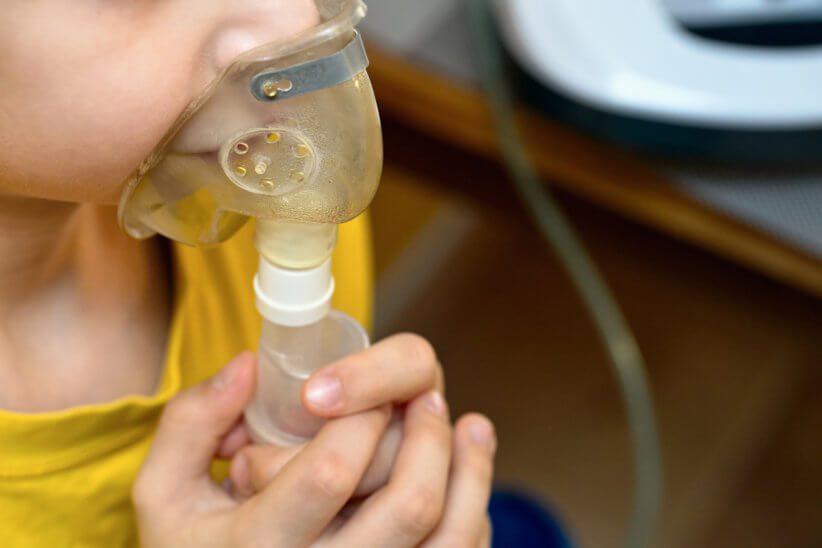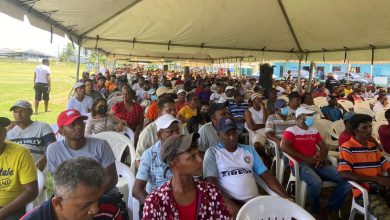RSV and Other Respiratory Illnesses: What Parents Need to Know


RSV and Other Respiratory Illnesses: What Parents Need to Know
If you are a parent, you are most likely hearing about the surge of RSV and Other Respiratory Illnesses affecting young children with the arrival of flu season. Being shared is that doctors across the country are seeing a resurgence in RSV, a common respiratory illness that can leave some kids in need of hospitalization.
Although data may be limited due to reporting delays from some labs, there are some concerning statistics for New York on the CDC website. Since Sept. 10, the percentage of positive cases of RSV in New York State has increased weekly from 1.9 to 6.4 as of Oct. 15, according to the agency. Rates are based on PCR testing.
Neighboring New Jersey reports RSV increase during that same time period too, jumping from 2.9 to 5.4.
Of course, after a few years of dealing with some severe viruses, this is not what parents want to hear. But cliche as it sounds knowledge is power and we have the information parents need to know regarding RSV and other respiratory illnesses in children this year as well as the symptoms to look for.
What is RSV—respiratory syncytial virus
RSV—respiratory syncytial virus—is a common seasonal respiratory virus that many children get by the time they’re 2 years old. For most kids and adults, the virus causes a mild cold-like illness with symptoms such as a runny nose, coughing and sneezing.
But for some infants and young children, it can be quite dangerous. Each year in the United States, an estimated 58,000 children younger than 5 are hospitalized due to RSV infection, according to the U.S. Centers for Disease Control and Prevention (CDC).
What Makes This Year Different for RSV?
This is the first flu season since the start of the COVID-19 pandemic that guidelines such as social distancing and mask-wearing have been lifted. Doctors say those guidelines not only helped prevent COVID-19, but other common respiratory illnesses, too.
So, with most COVID-19 measures dropped, other respiratory illnesses are coming back.
“This is not a surprise. We have been physically distancing, masking and avoiding super-spreader events. Birthday parties and play groups have been downsized,” Sten Vermund, M.D., professor of public health and pediatrics, Yale School of Public Health, said. “We’re not exposed to the usual viruses that we get exposed to as a respiratory virus season. So, children and adults alike come into this virus season, which has started right about now, and we’re more vulnerable.”
Vermund added that people have not had the infections they usually get. The partial immunity that may tide over year to year is not dramatic. Now, people are taking fewer precautions, such as going back to normal with social gatherings without masks. So naturally, viruses are going to circulate at a higher level.
“One of the facts about the COVID time period was that flu and other respiratory viruses were at historic lows because of the precautions we were taking for COVID,” Vermund said.
Laura Purdy, M.D., a family medicine physician, added that doctors are expecting RSV and other respiratory illnesses to be on the rise this time of year.
“We expect to see it happen this time of year. As the weather gets colder, respiratory viral infections are more contagious. They spread easier,” Purdy said.
Symptoms of RSV in Infants: What to Look For
In many people, symptoms of RSV can look like the common cold. Early symptoms of RSV can include a runny nose and cough.
But when it comes to infants, there are specific RSV symptoms parents should look for, including:
- Irritability
- Decreased activity
- Decreased appetite
- Apnea—pauses while breathing
A profuse runny nose in an infant can also be a sign of RSV.
“If you see a baby and it looks like someone turned on a faucet in their nose, it’s going to be RSV,” Purdy said.
Purdy explained that RSV, similar to other upper respiratory tract infections, can spread to the lungs, making it more dangerous. It can result in bronchiolitis, a common lung infection in young children and infants that causes inflammation and congestion in the small airways of the lungs. These are the children who require in-hospital treatment.
“A lot of those babies get hospitalized because they need oxygen,” Purdy said.
When to Go to the Hospital
Rebekah Diamond, M.D., hospital pediatrician in NYC and an assistant professor of pediatrics at Columbia University, described what a baby with more severe RSV looks like—and when to seek medical help.
“Some of the reasons to get help right away is if you have a baby who’s breathing very fast or if they are breathing in a way that you can see the skin sucking in between their ribs or in their neck. Those are called retractions,” she said.
One to two out of every 100 children younger than 6 months of age with RSV infection may need to be hospitalized, according to the CDC. Treatment in the hospital can include oxygen, intubation, and/or mechanical ventilation.
As scary as this sounds for a parent, it can be reassuring to know that treatment is very effective.
“Your instincts are right. If you’re worried, just bring them in and we’ll take care of them,” Diamond said. “For ages, pediatricians have dealt with this in the hospital, and it’s very, very common.”
From the public health perspective, Diamond added that it’s important to be mindful that illnesses such as RSV are mild and curable because of the resources that are available, including enough hospital beds and staff.
“With modern medical support, the outcomes are extremely good, even if you have to go to the hospital or intensive care unit, which is not uncommon. It’s all dependent on how our public health system is working to get the right resources,” Diamond said.
Preventing RSV
Not surprising, some of the best ways for kids and adults to prevent the spread of RSV are pretty simple. It’s basically what you’d expect to do when trying to prevent other respiratory illnesses, including:
- Washing hands often
- Avoiding close contact with sick people
- Covering coughs and sneezes
- Staying home if you’re sick
Diamond also recommends wearing masks as needed, especially around small babies.
“After COVID, we realized the precautions were protecting kids from other things,” she said. “When everyone was wearing masks, kids were not getting RSV or flu. And so what I’ve taken from that now is that when I see or visit babies under two months, I wear a mask.”
A Look at Vaccination
There is no vaccine for RSV, but the CDC says scientists are working on developing one.
In the meantime, Vermund from Yale recommends the flu and COVID vaccine for all who qualify.
“The key message is to get all of our children vaccinated. Boost all of our vaccinated adults. Get the reluctant to appreciate the billions and billions of vaccines that have been given with extraordinarily favorable safety profiles,” the doctor said. “Then, we can radically blunt the magnitude of at least influenza and COVID in the respiratory virus season.”
The CDC lists two other vaccines available for children—the pneumococcal and Haemophilus influenzae type b vaccines—that can help fight illness.
Psst..check out The NYC Migrant Crisis: How Families Are Caring for Their Kids



